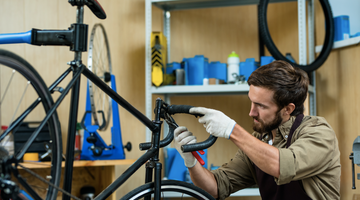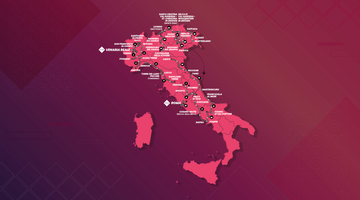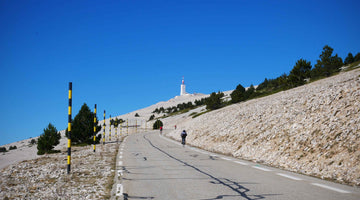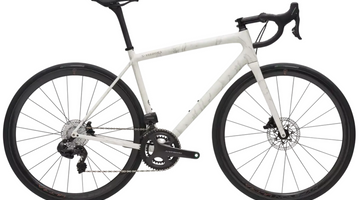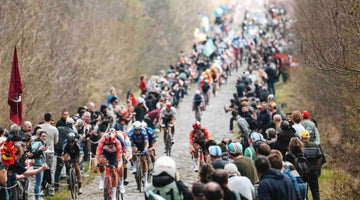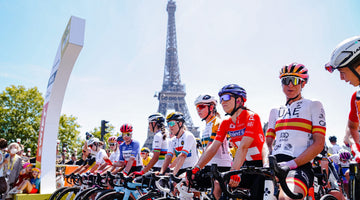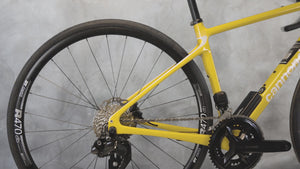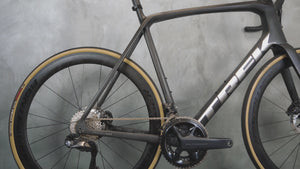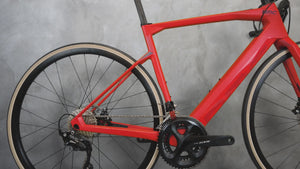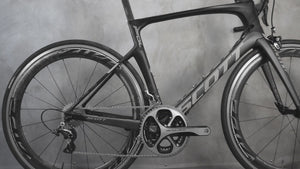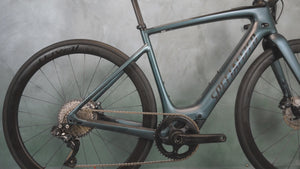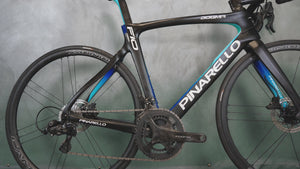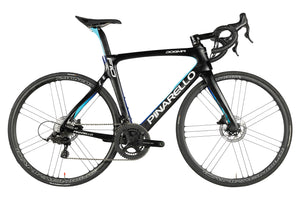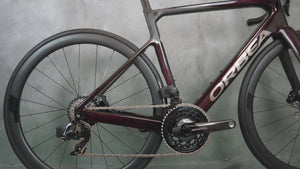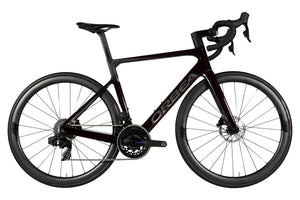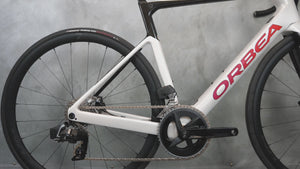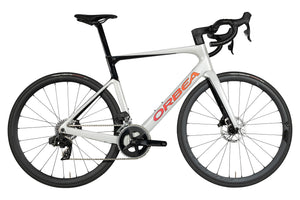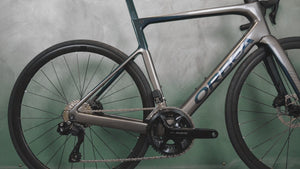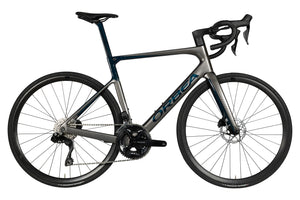Starting road cycling: our tips for a successful beginning
In this Article
Published on November 23, 2023
Beneficial for health and mind, road cycling also has the advantage of being able to be practiced almost anytime and anywhere. Another strong point: it's a free sport that you can enjoy without a license, without constraints... In short, freedom! But when you start, you can be a little lost with all the essential purchases to start road cycling. How to choose your first road bike? What distance to start cycling? What is the essential equipment for going cycling? The team at The Cyclist House shares its advice for entering the cycling community with peace of mind!

Starting road cycling: the good reasons
To stay in shape or lose weight
Cycling is an endurance sport that engages a large part of the body. Yes, contrary to popular belief, it's not just the legs that work. Of course, this part will develop the most, but the back and abdominal muscles will also be involved in maintaining balance. By pedaling, you contribute to the overall muscle strengthening of your body.
Non-traumatic for the joints, cycling allows you to practice a long sport without having to absorb repeated shocks, such as running, for example.
Moreover, in cycling, efforts are longer: you quickly reach two hours. This results in significant calorie expenditure (depending on the level of commitment, energy consumption varies from 500 to almost 1500 calories per hour), making cycling an ideal sport for those looking to lose weight.
But that's not all; road cycling is also very beneficial for the cardiovascular system and lungs.
To enjoy the benefits of outdoor physical activity
No news here, road cycling is practiced... outdoors! 😅
Unlike exercises in a gym, this allows for much better oxygenation of the blood. Close to nature, this sport also brings undeniable psychological benefits.
You will also find that starting road cycling will allow you to better explore the roads near you, develop your sense of direction, and work on your memory.
Finally, the release of endorphins will give you an incomparable feeling of well-being.
To meet new people

Cycling can be practiced alone... but also with company!
You've probably already noticed, road cycling has many enthusiasts. Every weekend, cyclists gather to ride together. It's a new social aspect that opens up to you. You'll discover a very friendly environment where you learn about equipment, training, nutrition, on every ride.
Gradually, your fellow riders become friends: you tease each other, discuss everything and nothing. And besides, riding in a group means less wind resistance... it's less challenging 😉
Which road bike to choose for beginners?
Choosing your first road bike when you're a beginner may seem a bit complicated. The options are abundant, and at first glance, all bikes may seem similar after all... But don't panic, we're here to help you choose wisely!
Road bike for beginners: how to choose?
The first thing is to question yourself about the goals you want to achieve. Why are you starting road cycling? How do you envision your practice?
Indeed, road bikes have different geometries that will impact your pedaling position. Some will be very oriented towards competition and speed, while others will prioritize comfort.
To simplify, let's say there are three major families of road bikes: aero, all-rounder, and endurance bikes. Which are the best for a beginner? We'll give you our opinion right away 👇
Endurance bikes: prioritize comfort
To engage in regular physical activity at a rather relaxed pace without seeking exceptional performance, an endurance bike is what you need.
These models have the particularity of offering a slightly more upright pedaling position, and therefore, it's easier to maintain over a long distance.
These are good bikes for a beginner because they are maneuverable. They also stand out for their great versatility as they are comfortable on almost all terrains (as long as you stay on the road, of course 😅).
Aero bikes: for performance and flat terrains
These models are designed to go (very) fast. Every detail has been worked on to maximize air penetration.
Generally, these bikes have a relatively low handlebar, with few steerer spacers, and sometimes have a monocoque handlebar. The position is therefore very inclined forward, and the torso is almost horizontal. They are primarily designed to perform on flat rolling sections.
Their ultra-lightweight allows them to perform well on climbs (in fact, several teams use aero bikes even on mountain stages of the Tour de France).
These are often lively and very responsive bikes that respond to the slightest solicitation from the cyclist. In short, real racing bikes ⏱
Obviously, they tend to captivate the eyes of beginners (and all cyclists in general 😉) thanks to their meticulous design and harmonious curves. However, it must be said: these are excellent competition bikes, but they may not be the best for starting in road cycling...
All-rounders: the best for starting road cycling
These are the most versatile road bikes.
Depending on the settings, you can achieve a very committed pedaling position or a more comfortable one. They are comfortable everywhere: long climbs, plains, steep and dry ascents... In this category, there are models that have won the Tour de France like the Dogma (which achieved success with Sky), or the Colnago that led Tadej Pogacar to his two victories.
These are probably the best road bikes for beginners; these bikes are quite maneuverable and allow you to gradually get used to road cycling. And they will take you far: believe us, you'll need thousands of kilometers to start pushing the limits of these models.
Budget for a first road bike
Let's be honest: starting road cycling is an investment, especially because the first bike represents a significant budget.
As with anything, you'll find road bikes at various price points... However, the quality may not always be up to par.
You can find new road bikes for less than £1000, especially in major sports retailers. At this price, the bike will be equipped with low-end components and outdated technology. The design will also be outdated.
Another drawback of these bikes is that they will quickly lose their value. If it turns out that you don't like road cycling (although we strongly doubt it 😉), you will lose a significant amount of money when reselling the bike... So, it's not a good investment.
We recommend aiming for a first road bike in the mid-range to high-end category. To be specific, the budget for a good first bike is between £1500 and £2500.
Again, new models are likely to quickly lose their value (about 50% in the first year alone...), so it's preferable to choose a used road bike. This will allow you to ride a higher quality bike at a much lower cost. Plus, it's an eco-friendly solution.
Of course, the risk with used bikes is that you're never sure of what you're buying. That's why we recommend opting for a reconditioned road bike.
Choosing Your First Road Bike: Why Opt for Reconditioned?
Unlike a typical used bike, our reconditioned bikes have all been inspected by our team of mechanics. They are adjusted and restored. Parts are replaced whenever necessary. The result? A road bike as good as new, ready to give you your first thrills!
In addition to the impeccable condition of the bike that ensures you ride with peace of mind, our reconditioned road bikes are an excellent investment. When you want to resell your bike to upgrade or for another reason, you'll be pleasantly surprised to see that their market value has hardly decreased!
The high-end bikes we offer are indeed very popular among enthusiasts.
💡 Small tip: maintain your bike well and regularly, the resale price will be even more interesting for you! 😉
Another good reason to opt for reconditioned bikes: it allows you to ride on bikes whose new price is beyond your budget. These models are performance-oriented, responsive, and very enjoyable to ride. The only limits you will encounter with them are those of your legs!
Finally, reconditioned is eco-friendly! By choosing a second-hand model that has been refurbished rather than a new one, you save money for your wallet, certainly... But you also save a lot of resources for a planet that really needs it! 🌍
Equipment/Material: The Essentials

Starting Road Cycling: What Gear?
Once you've taken your shiny bike out of its "The Cyclist House" stamped box, you'll need suitable attire to fully enjoy it. Forget about shorts and loose T-shirts. To minimize wind resistance, you need real cycling clothes:
- jersey;
- shorts;
- gloves (by the way, don't give in to the trend of going without gloves... you'll regret it quickly in case of a fall);
- helmet;
- glasses;
- socks;
- shoes and cleats...
Speaking of shoes, although our bikes are theoretically delivered without pedals, we can offer them to you. Feel free to talk to us about it when making your purchase!
Essentials for a Good Start in Road Cycling
And that's not all; a few other pieces of equipment are essential to start road cycling:
- a GPS tracker to plan your routes and check your statistics;
- two water bottles and their bottle holders;
- a repair kit (tire levers, inner tube, mini pump, multi-tool for bikes).
Additionally, always go out with:
- your mobile phone;
- your documents (at least ID card and health insurance card);
- some cash;
- energy bars and/or fruits easy to consume while riding.
The First Road Bike Rides
Setting the First Goals
You're ready to start road cycling! But what program to follow for beginners in road cycling? How far can a beginner reasonably ride?
Generally, we don't think so much in terms of distance but rather in terms of ride time. Indeed, depending on the elevation around you, for two hours of riding, you could cover 35 to 50 km as a beginner...
We recommend starting with rides of 1.5 hours once or twice a week. When you start to feel less exhausted, extend the ride to reach 2 hours, then 2.5 hours, etc. Occasionally, also do shorter and more intense rides, i.e., 2 or 3 km/h faster than your usual pace.
You can then increase the number of weekly rides if your schedule allows. By following this program, you should progress very quickly.
Eating Well: The Secret to Cycling Performance

If we had to give you one piece of advice to follow scrupulously, it would be: eat before you're hungry and drink before you're thirsty. It's fundamental! If you feel hungry or thirsty, your body has been lacking for a while, and your performance is already compromised.
It's generally advised to take a sip every 10 minutes and eat every hour... Adapt this based on your individual physiological needs and feelings. Weather, as well as the intensity and elevation gain of your ride, should also be taken into account: don't wait an hour to eat if you're climbing Alpe d'Huez 🥵
To fully enjoy your bike ride, it's also important to fuel yourself well before the effort. Indeed, a suitable diet will provide your body with the energy it needs to pedal efficiently.
It is recommended to eat at least two hours before your ride. This will allow your body to digest properly and avoid feelings of bloating or nausea during the effort.
Ideally, prioritize foods rich in carbohydrates that provide a sustainable source of energy. Whole grains, fruits, vegetables, and legumes are excellent sources of complex carbohydrates.
Avoid fast sugars before the effort. Indeed, this will cause a rapid rise in blood sugar, followed by a sharp drop. It's the best way to feel fatigued at the moment when you need to be in top form.
Some examples of foods to favor:
- for breakfast: oat flakes, muesli, whole grain bread, jam tart, yogurt, fresh fruits,
- for lunch: pasta, rice, quinoa, vegetables, legumes.
You now have all the keys to start road cycling well. We wish you a lot of happiness in this new adventure. You will discover a demanding sport, often difficult, but full of benefits






